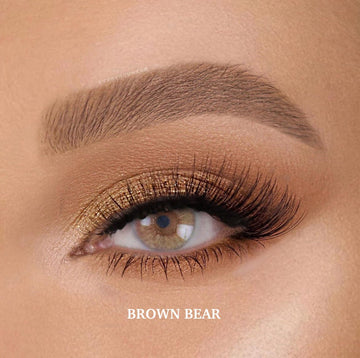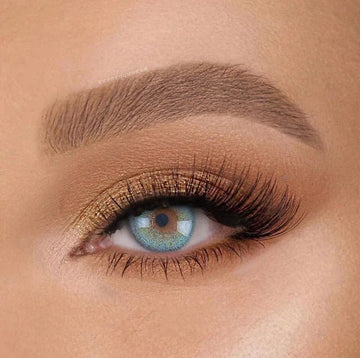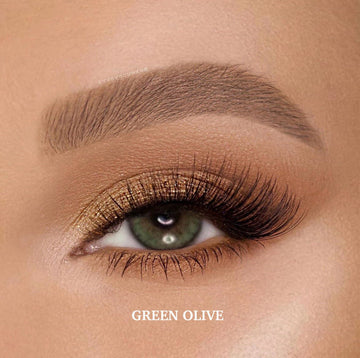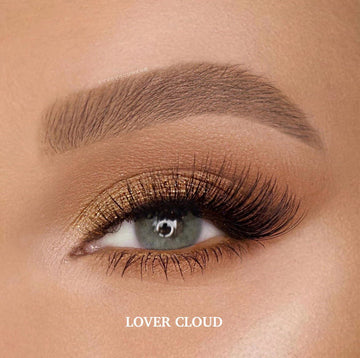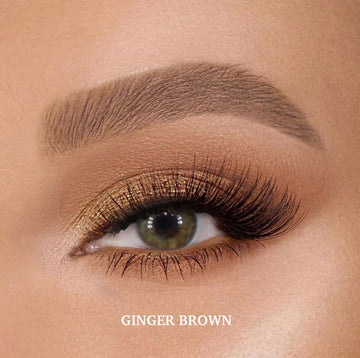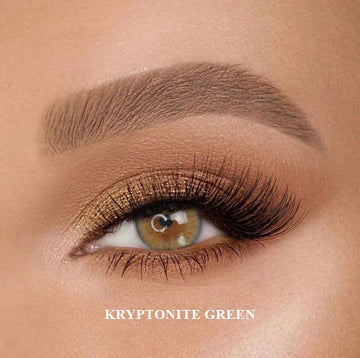What Is the Rarest Eye Color? Discover Green, Gray, and Hazel Eyes
Green was once considered the rarest eye color, but recent classifications now suggest gray has taken the top spot. Eye color, a hereditary trait influenced by multiple genes, is determined by pigment production such as melanin, eumelanin, and pheomelanin. The unique combination of these pigments in the iris creates the eye colors we see today.
In this article, we explore the rarest eye colors, the genetics behind them, health implications, how age can change your eye color, and safe ways to try a new look with coloured contact lenses.

Most Common and Rarest Eye Colors
Eye colors traditionally fall into four main categories: brown, blue, hazel (or amber), and green. Brown is by far the most common, accounting for around 45% of Americans and up to 80% of the global population. Blue follows, with about 27% in the U.S. population.
Green eyes have long been thought of as the rarest, appearing in about 2% of people worldwide. Hazel or amber eyes follow closely behind. What appears to be black eyes are typically very dark brown or due to large pupils, as black is not classified as an eye color.
If you want to experience rare green eyes, we recommend these shades from Otaku Lenses:
- Otaku Lover Cloud
- Otaku Green Olive
- Otaku Romantic Green
For hazel or amber tones, try these natural-looking lenses:
- Otaku Desire Honey
- Ginger Brown
- Otaku Doll Hazel

Gray: The New Rarest Eye Color
According to recent classifications, gray eyes are now considered the rarest natural eye color. Gray was previously grouped with blue, but it's now recognized as its own category, appearing in less than 1% of the world’s population.
For a stunning gray eye transformation, explore these options from Otaku Lenses:

What Determines Your Eye Color?
The color of your eyes depends on the concentration and distribution of melanin in the iris. Eumelanin creates darker shades like brown, while pheomelanin results in lighter colors such as green or amber. Light scattering in the iris also influences eye color, especially for blue and gray eyes.
Geography plays a role too. Populations closer to the equator often have darker eyes and skin due to higher melanin levels, while those further away tend to have lighter features.

Decoding the Genetics of Eye Color
Eye color inheritance is more complex than just dominant and recessive genes. Research shows that even two brown-eyed parents can have a child with lighter eyes.
The primary gene responsible is OCA2, with help from others like HERC2, ASIP, IRF4, SLC24A4, SLC24A5, SLC45A2, TPCN2, TYR, and TYRP1. These genes regulate melanin production and distribution, creating the wide variety of eye colors we see.
Beyond the Norm: Other Eye Color Variations
Heterochromia
Heterochromia is when someone has two different-colored eyes. It can be congenital (from birth) or develop due to conditions like injury, certain medications, or illnesses such as glaucoma or diabetes.

Anisocoria
Anisocoria is the condition of unequal pupil sizes, which can give the appearance of different eye colors. While usually harmless, it can also indicate underlying issues like nervous system disorders or eye injuries. Always consult a healthcare professional if you notice changes.

Albino Eyes: Red, Pink, Violet
People with albinism may have eyes that appear red, pink, or violet due to the lack of melanin. These unique colors occur when light reflects off the blood vessels at the back of the eye. Albinism often comes with vision challenges and requires eye care management.
Eye Color and Your Health
Eye color might have more to do with health than you think. Some studies suggest a connection between lighter eye colors and higher pain tolerance, while others link certain eye colors to risks of specific conditions. However, research is ongoing, and more evidence is needed.
Eye Color and Changes With Age
It's natural for eye color to change slightly over time. Conditions like Fuchs heterochromic iridocyclitis can cause changes in eye color and vision loss. If you notice significant changes in your eye color, consult an eye care professional promptly.
Changing Your Eye Color Safely
If you're curious about changing your eye color, coloured contact lenses are a safe and effective way to experiment. Whether for vision correction or cosmetic enhancement, always follow proper lens care guidelines and consult an eye care specialist if you’re unsure.
Explore our full range of Otaku Lenses to find your dream eye color today!




